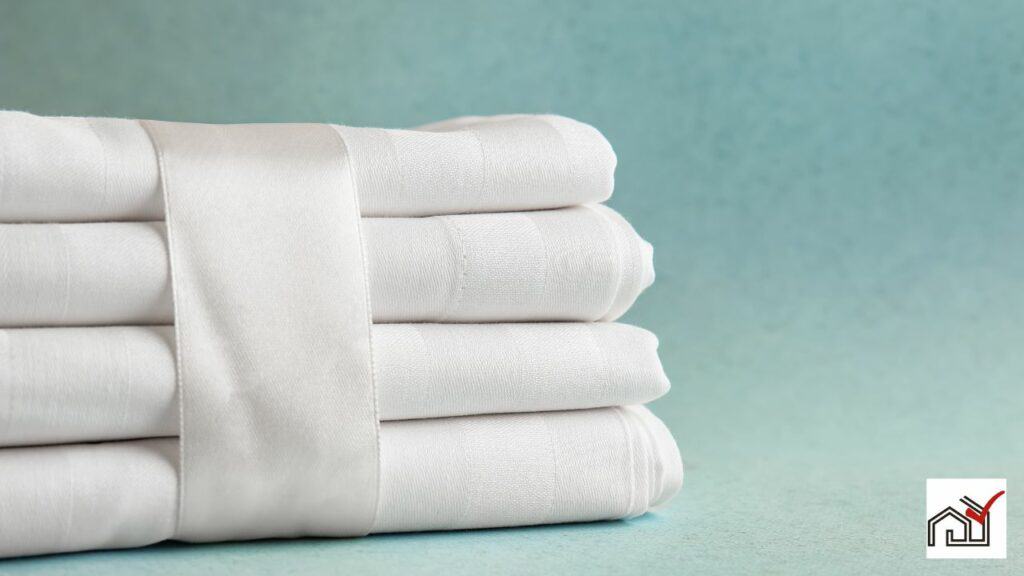You can use a mattress cover on a foam mattress to protect it and make it last longer. A mattress cover helps prevent damage from spills, stains, and allergens. It also keeps dust mites and odors away.
When picking a cover, choose one that allows air flow and stretches well to fit the foam mattress properly. A good fit is important to prevent the cover from moving around and making the mattress uncomfortable.
A well-chosen mattress cover is an effective way to maintain a foam mattress.
Understanding Foam Mattresses
Foam mattresses absorb liquids easily, so a protective cover is necessary. Memory foam mattresses, in particular, mold to the body's shape, providing personalized support. They react to body heat and pressure but can be damaged by moisture.
Liquids can seep deep into foam, causing stains, odors, and mold, which affects the mattress's hygiene and performance. Using a mattress protector extends the life of a memory foam mattress.
A good mattress protector should not interfere with the mattress's contouring ability. It needs to be thin yet effective against spills and stains. A breathable protector with a comfortable cotton terry surface helps maintain the mattress's features and ensures sleep comfort.
Benefits of Mattress Covers
Mattress covers offer several benefits. They protect foam mattresses from wear and tear, extending their lifespan. These covers serve as a barrier against damage that can affect the mattress's structure and comfort.
A key advantage of mattress covers is their protection against spills, stains, and moisture. Waterproof protectors are particularly useful for those who eat in bed, have children, or are accident-prone, as they stop liquids from reaching the foam and causing stains or odors. This also helps maintain the mattress's warranty.
Covers also promote a clean sleep environment by blocking allergens, dust mites, and other irritants that can lead to allergies or respiratory problems. They can be easily removed and washed, which helps keep the sleeping surface sanitary.
Moreover, mattress covers can enhance sleep quality by reducing exposure to allergens and irritants, benefiting those with allergies or asthma and leading to fewer nighttime disturbances.
Selecting the Right Cover
When selecting a cover for your foam mattress, choose one that protects while preserving the mattress's comfort and support. The best memory foam mattress protector should be thin and not alter the mattress's feel. Use a protector, not a topper, to guard against spills and allergens.
Avoid quilted protectors as they can affect the mattress's ability to conform and relieve pressure. Opt for a jersey fitted sheet that stretches and fits the mattress's shape without changing its qualities.
The protector must be breathable to ensure proper air flow and temperature control during sleep. It should also be quiet, without making noise that could disturb sleep. Waterproof materials are available that protect without compromising the mattress's feel.
Installation Tips and Tricks
To properly install a mattress protector on a foam mattress, follow these steps:
- Clean the mattress and any toppers to remove dirt or debris.
- Place the Allergon mattress protector over one corner of the mattress and gradually stretch it to cover the entire mattress, securing each corner.
- The soft cotton terry side of the protector should be facing up, while the polyurethane membrane should be in direct contact with the mattress.
- Be careful not to pull too hard to avoid tearing, particularly on the more sensitive surface of memory foam.
- Use a jersey fitted sheet for additional protection that will not restrict the comfort of the mattress.
- For added protection, use pillow and duvet protectors made from stretchy jersey fabric.
- Install the cover gently and patiently to ensure a snug fit without overstretching.
Care and Maintenance
Maintaining your mattress cover is crucial for its durability and for the protection of your memory foam mattress. Memory foam mattresses can absorb liquids and hold onto odors, so a good mattress protector is important. Wash the cover regularly to avoid accumulation of dust mites, allergens, and bodily fluids, which can harm the cover and mattress.
Follow the care instructions provided by the manufacturer. Most mattress covers, including the Allergon mattress protector, are machine washable and can be tumble dried. Avoid high temperatures when drying to prevent damage to the waterproof layer. Use a gentle detergent and do not use bleach or strong chemicals to maintain the cover's quality.
While the cover is being washed, air out your memory foam mattress to prevent moisture build-up and potential mold or mildew growth. Maintaining a clean and dry mattress is essential for its life span.
Regularly check your mattress cover for wear or damage. Replace the cover if it is torn or the waterproofing is impaired. Choose a thin, stretchy mattress protector that doesn't compromise the mattress's comfort and support.
Common Concerns Addressed
Adding a mattress cover can affect the comfort and support of a memory foam mattress. The right cover will not compromise the mattress's ability to contour to your body. A thin, stretchy, and breathable mattress protector, like the Allergon, allows the memory foam to respond to body heat and weight, offering the intended support and comfort. It also protects the mattress from spills and stains.
Using a quilted or PVC mattress protector can change the mattress's feel, making it less body-responsive and potentially causing heat retention, which can reduce sleeping comfort. It is important to choose a protector that preserves the qualities of memory foam to ensure both protection and comfort.





